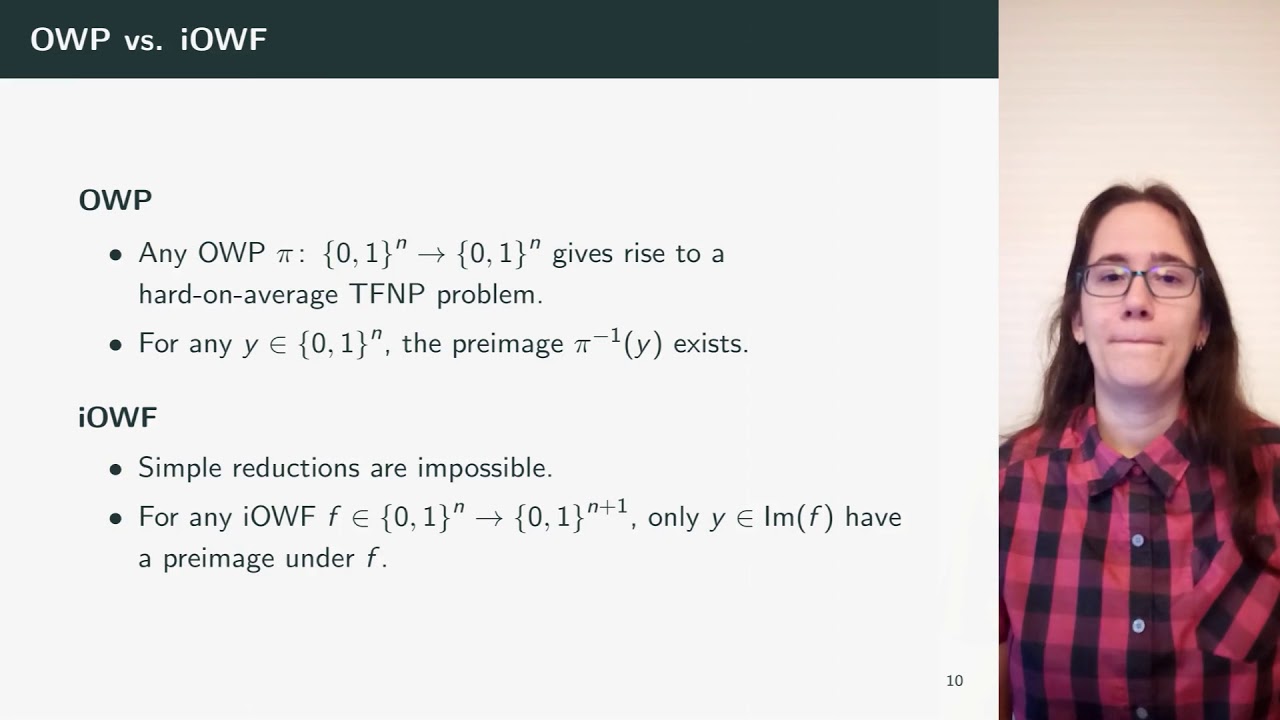Welcome to the resource topic for 2020/1162
Title:
On Average-Case Hardness in TFNP from One-Way Functions
Authors: Pavel Hubáček, Chethan Kamath, Karel Král, Veronika Slívová
Abstract:The complexity class TFNP consists of all NP search problems that are total in the sense that a solution is guaranteed to exist for all instances. Over the years, this class has proved to illuminate surprising connections among several diverse subfields of mathematics like combinatorics, computational topology, and algorithmic game theory. More recently, we are starting to better understand its interplay with cryptography. We know that certain cryptographic primitives (e.g. one-way permutations, collision-resistant hash functions, or indistinguishability obfuscation) imply average-case hardness in TFNP and its important subclasses. However, its relationship with the most basic cryptographic primitive – i.e., one-way functions (OWFs) – still remains unresolved. Under an additional complexity theoretic assumption, OWFs imply hardness in TFNP (Hubacek, Naor, and Yogev, ITCS 2017). It is also known that average-case hardness in most structured subclasses of TFNP does not imply any form of cryptographic hardness in a black-box way (Rosen, Segev, and Shahaf, TCC 2017) and, thus, one-way functions might be sufficient. Specifically, no negative result which would rule out basing average-case hardness in TFNP solely on OWFs is currently known. In this work, we further explore the interplay between TFNP and OWFs and give the first negative results. As our main result, we show that there cannot exist constructions of average-case (and, in fact, even worst-case) hard TFNP problem from OWFs with a certain type of simple black-box security reductions. The class of reductions we rule out is, however, rich enough to capture many of the currently known cryptographic hardness results for TFNP. Our results are established using the framework of black-box separations (Impagliazzo and Rudich, STOC 1989) and involve a novel application of the reconstruction paradigm (Gennaro and Trevisan, FOCS 2000).
ePrint: https://eprint.iacr.org/2020/1162
Talk: https://www.youtube.com/watch?v=bHWf1cLBpNU
See all topics related to this paper.
Feel free to post resources that are related to this paper below.
Example resources include: implementations, explanation materials, talks, slides, links to previous discussions on other websites.
For more information, see the rules for Resource Topics .
